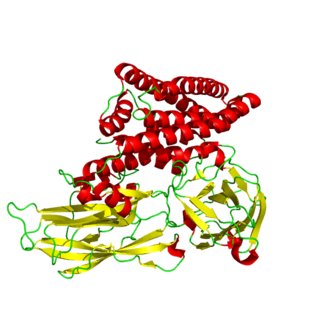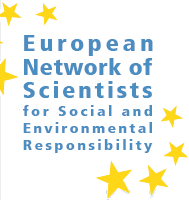
Genetically modified maize (corn) is a genetically modified crop. Specific maize strains have been genetically engineered to express agriculturally-desirable traits, including resistance to pests and to herbicides. Maize strains with both traits are now in use in multiple countries. GM maize has also caused controversy with respect to possible health effects, impact on other insects and impact on other plants via gene flow. One strain, called Starlink, was approved only for animal feed in the US but was found in food, leading to a series of recalls starting in 2000.

Herbicides, also commonly known as weed killers, are substances used to control undesired plants, also known as weeds. Selective herbicides control specific weed species while leaving the desired crop relatively unharmed, while non-selective herbicides kill plants indiscriminately. The combined effects of herbicides, nitrogen fertilizer, and improved cultivars has increased yields of major crops by 3x to 6x from 1900 to 2000.

Roundup is a brand name of herbicide originally produced by Monsanto, which Bayer acquired in 2018. Prior to the late-2010s formulations, it used broad-spectrum glyphosate-based herbicides. As of 2009, sales of Roundup herbicides still represented about 10 percent of Monsanto's revenue despite competition from Chinese producers of other glyphosate-based herbicides. The overall Roundup line of products represented about half of Monsanto's yearly revenue in 2009. The product is marketed to consumers by Scotts Miracle-Gro Company. In the late-2010s other non-glyphosate containing herbicides were also sold under the Roundup brand.

Genetically modified foods, also known as genetically engineered foods, or bioengineered foods are foods produced from organisms that have had changes introduced into their DNA using various methods of genetic engineering. Genetic engineering techniques allow for the introduction of new traits as well as greater control over traits when compared to previous methods, such as selective breeding and mutation breeding.

Glyphosate is a broad-spectrum systemic herbicide and crop desiccant. It is an organophosphorus compound, specifically a phosphonate, which acts by inhibiting the plant enzyme 5-enolpyruvylshikimate-3-phosphate synthase (EPSP). It is used to kill weeds, especially annual broadleaf weeds and grasses that compete with crops. Its herbicidal effectiveness was discovered by Monsanto chemist John E. Franz in 1970. Monsanto brought it to market for agricultural use in 1974 under the trade name Roundup. Monsanto's last commercially relevant United States patent expired in 2000.
In academic publishing, a retraction is a mechanism by which a published paper in an academic journal is flagged for being seriously flawed to the extent that their results and conclusions can no longer be relied upon. Retracted articles are not removed from the published literature but marked as retracted. In some cases it may be necessary to remove an article from publication, such as when the article is clearly defamatory, violates personal privacy, is the subject of a court order, or might pose a serious health risk to the general public.
Science by press conference or science by press release is the practice by which scientists put an unusual focus on publicizing results of research in the news media via press conferences or press releases. The term is usually used disparagingly, to suggest that the seekers of publicity are promoting claims of questionable scientific merit, using the media for attention as they are unlikely to win the approval of the scientific community.

Genetically modified crops are plants used in agriculture, the DNA of which has been modified using genetic engineering methods. Plant genomes can be engineered by physical methods or by use of Agrobacterium for the delivery of sequences hosted in T-DNA binary vectors. In most cases, the aim is to introduce a new trait to the plant which does not occur naturally in the species. Examples in food crops include resistance to certain pests, diseases, environmental conditions, reduction of spoilage, resistance to chemical treatments, or improving the nutrient profile of the crop. Examples in non-food crops include production of pharmaceutical agents, biofuels, and other industrially useful goods, as well as for bioremediation.

Glufosinate is a naturally occurring broad-spectrum herbicide produced by several species of Streptomyces soil bacteria. Glufosinate is a non-selective, contact herbicide, with some systemic action. Plants may also metabolize bialaphos and phosalacine, other naturally occurring herbicides, directly into glufosinate. The compound irreversibly inhibits glutamine synthetase, an enzyme necessary for the production of glutamine and for ammonia detoxification, giving it antibacterial, antifungal and herbicidal properties. Application of glufosinate to plants leads to reduced glutamine and elevated ammonia levels in tissues, halting photosynthesis and resulting in plant death.

Genetically modified food controversies are disputes over the use of foods and other goods derived from genetically modified crops instead of conventional crops, and other uses of genetic engineering in food production. The disputes involve consumers, farmers, biotechnology companies, governmental regulators, non-governmental organizations, and scientists. The key areas of controversy related to genetically modified food are whether such food should be labeled, the role of government regulators, the objectivity of scientific research and publication, the effect of genetically modified crops on health and the environment, the effect on pesticide resistance, the impact of such crops for farmers, and the role of the crops in feeding the world population. In addition, products derived from GMO organisms play a role in the production of ethanol fuels and pharmaceuticals.

Environmental toxicology is a multidisciplinary field of science concerned with the study of the harmful effects of various chemical, biological and physical agents on living organisms. Ecotoxicology is a subdiscipline of environmental toxicology concerned with studying the harmful effects of toxicants at the population and ecosystem levels.
The MON 810 corn is a genetically modified maize used around the world. It is a Zea mays line known as YieldGard from the company Monsanto. This plant is a genetically modified organism (GMO) designed to combat crop loss due to insects. There is an inserted gene in the DNA of MON 810 which allows the plant to make a protein that harms insects that try to eat it. The inserted gene is from the Bacillus thuringiensis which produces the Bt protein that is poisonous to insects in the order Lepidoptera, including the European corn borer.
Food and Chemical Toxicology is a peer-reviewed scientific journal covering aspects of food safety, chemical safety, and other aspects of consumer product safety. It is published by Elsevier and was established in 1963. The editor-in-chief is Bryan Delaney.

The Séralini affair was the controversy surrounding the publication, retraction, and republication of a journal article by French molecular biologist Gilles-Éric Séralini. First published by Food and Chemical Toxicology in September 2012, the article presented a two-year feeding study in rats, and reported an increase in tumors among rats fed genetically modified corn and the herbicide RoundUp. Scientists and regulatory agencies subsequently concluded that the study's design was flawed and its findings unsubstantiated. A chief criticism was that each part of the study had too few rats to obtain statistically useful data, particularly because the strain of rat used, Sprague Dawley, develops tumors at a high rate over its lifetime.

Gilles-Éric Séralini is a French molecular biologist, political advisor and activist on genetically modified organisms and foods. He is of Algerian-French origin. Séralini has been a professor of molecular biology at the University of Caen since 1991, and is president and chairman of the board of CRIIGEN.

Cry1Ac protoxin is a crystal protein produced by the gram-positive bacterium, Bacillus thuringiensis (Bt) during sporulation. Cry1Ac is one of the delta endotoxins produced by this bacterium which act as insecticides. Because of this, the genes for these have been introduced into commercially important crops by genetic engineering in order to confer pest resistance on those plants.

Stephanie Seneff is an American computer scientist and anti-vaccinationist. She is a senior research scientist at the Computer Science and Artificial Intelligence Laboratory (CSAIL) of the Massachusetts Institute of Technology (MIT). Working primarily in the Spoken Language Systems group, her research at CSAIL relates to human–computer interaction, and algorithms for language understanding and speech recognition. In 2011, she began publishing controversial papers in low-impact, open access journals on biology and medical topics; the articles have received "heated objections from experts in almost every field she's delved into," according to the food columnist Ari LeVaux.

The European Network of Scientists for Social and Environmental Responsibility (ENSSER), is an international non-profit group of scientists, academics and physicians, founded in 2009. ENSSER organizes conferences on a variety of topics, with participants from governmental institutions, Universities and organisations.
Glyphosate-based herbicides are usually made of a glyphosate salt that is combined with other ingredients that are needed to stabilize the herbicide formula and allow penetration into plants. The glyphosate-based herbicide Roundup was first developed by Monsanto in the 1970s. It is used most heavily on corn, soy, and cotton crops that have been genetically modified to be resistant to the herbicide. Some products include two active ingredients, such as Enlist Duo which includes 2,4-D as well as glyphosate. As of 2010, more than 750 glyphosate products were on the market. The names of inert ingredients used in glyphosate formulations are usually not listed on the product labels.
Paul Deheuvels is a French statistician. He is a member of the French Academy of Sciences.








